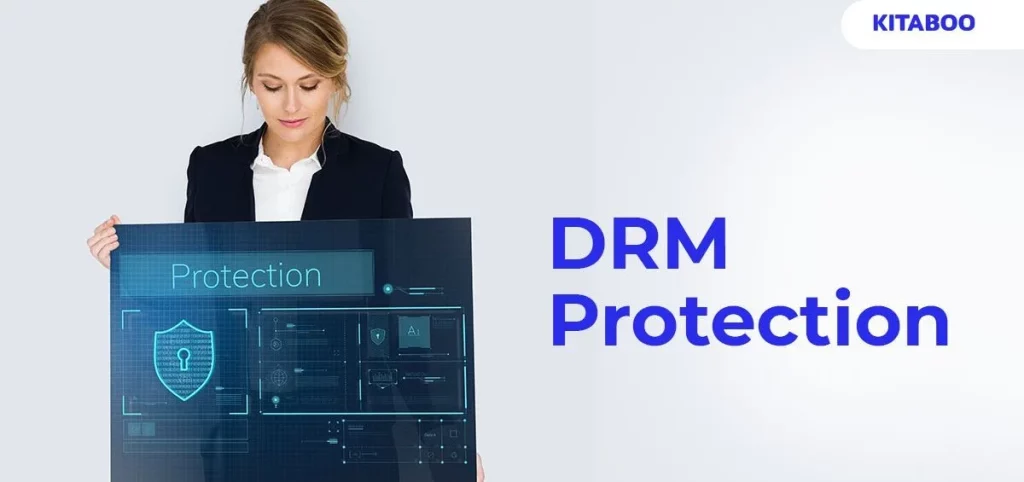
Securing Your eBooks: The Benefits of DRM Protection for K12 Publishers
As the consumption of digital content increases, so does the need to protect it. This is especially true for K12 publishers who create content in the form of eBooks and digital textbooks. Fortunately, there is a way to protect your digital content from misuse or copyright infringement. It’s called Digital Rights Management or DRM for short.
In this article, we’ll explore multiple aspects of DRM protection in relation to you, the K12 publisher. Here’s what we’ll cover.
Table of Contents:
II. Why Use DRM to Protect Your eBooks?
III. The Impact of Piracy on the Publishing Industry
IV. How Does DRM Protection Work?
V. Benefits of DRM Implementation for K12 Publishers
VI. Benefits of DRM Protection for eBook Users
VII. Benefits of DRM Protection for eBook Users
VIII. Things to Consider When Implementing DRM
IX. Criticisms and Challenges of DRM
X. Conclusion
How Does One Define DRM?
In the realm of publishing, Digital Rights Management (DRM) serves as a protective shield for digital content such as eBooks.
DRM refers to a set of technologies, protocols, and policies designed to protect digital content by controlling its access, usage, and distribution. It serves as a safeguard for intellectual property, ensuring that both content creators and publishers have the opportunity to reap the benefits of their efforts in a fair manner.
By implementing DRM, K12 publishers can safeguard their digital textbooks from unauthorized duplication and piracy.
Why Use DRM to Protect Your eBooks?
As a K12 content provider, you might wonder what all the fuss is about. After all, there’s no real harm, if students choose to share educational content with each other, is there? Unfortunately, it’s not that simple.
Today, the educational world is highly competitive and like it or not, you run a business. So, yes! Students sharing content freely may not be a bad thing, but when your competitors gain access to that very same content, it could harm your bottom line.
If you’re still on the fence about using DRM, here are a few statistics that might change your perspective.
The Impact of Piracy on the Publishing Industry
Piracy poses a significant threat to the publishing industry. Unauthorized distribution and sharing of eBooks can result in substantial revenue loss for publishing companies. Pirated copies not only deprive publishers of potential sales but also undermine the value of their intellectual property. DRM protection acts as a deterrent to piracy.
According to a study by Nielsen, in 2017 22% of eBook users in the US were pirates, taking away around 33% of the market and costing the publishing industry $315 million!
While one might think that the fight against piracy is a lost cause, we’re here to tell you it’s not.
How Does DRM Protection Work?
DRM uses various forms of encryption that assign certain restrictions to your eBooks. These restrictions define actions that are permitted to users such as reading, printing, or copying content. DRM systems typically require users to authenticate themselves and acquire a license before gaining access to the protected eBooks.
Below we’ve elaborated a few benefits of DRM implementation. These will give you a better understanding of how DRM protection works.
Benefits of DRM Implementation for K12 Publishers
-
Protection against Unauthorized Copying and Distribution
With DRM protection one can place restrictions on the way one’s content is utilized. For example, licensed users may not have the option of sharing your eBook content. You could also stop your users from taking screenshots of your content.
These methods reduce the risks of piracy and revenue loss as a result of unauthorized copying and distribution.
-
Further Control over Content Usage and Access
DRM gives you complete control over the usage and access of your eBooks.
As a content publisher, you can define aspects such as the number of devices on which your eBooks can be accessed, permissions and limits on the ability to print or copy the content, and the duration for which a licensed user has access to your content.
This level of control empowers you to enforce your licensing terms and protect your content from misuse.
-
Increased Revenue and Profit Potential
When eBooks are adequately protected, users are more likely to purchase legitimate copies instead of resorting to illegal downloads. This helps you generate revenue and maintain a sustainable business model.
By implementing DRM protection, you not only safeguard your content, you also increase the potential for revenue and profit.
Benefits of DRM Protection for eBook Users
Believe it or not, DRM protection also helps your end-user, the reader. Here’s how.
-
Assured Content Integrity
DRM ensures that the content of eBooks remains intact and unaltered throughout the distribution process. By encrypting your files, DRM prevents unauthorized modifications or tampering, guaranteeing that readers receive the genuine, unadulterated version of your content.
-
Flexible Usage Options
For legitimate users, DRM could provide a great deal of flexibility in terms of eBook usage. For example, a publisher can permit actions such as offline reading, taking printouts or even copying excerpts for personal use.
This flexibility allows readers to enjoy their eBooks while still respecting the rights of the content creator.
Now that you know how DRM helps both you and your customer, let’s take a look at how it should be implemented.
Things to Consider When Implementing DRM
When implementing DRM, K12 publishers need to take multiple aspects into consideration. Some of these include:
-
Choosing the Right DRM Solution
The market is flooded with DRM solutions. Shortlisting from them can be a difficult process. We believe the best way to go about this is to evaluate your specific requirements and choose a solution that aligns with your needs.
As a publisher, you may want to consider factors such as encryption strength, compatibility with eBook formats, ease of implementation, and support across different platforms.
-
Balancing Security & Usability
This is one of the biggest challenges for any content publisher, and more so for K12 publishers who cater to a very fickle yet demanding audience.
While robust security measures are crucial, they cannot afford to overly inconvenience your legitimate users. Complex DRM mechanisms or restrictive usage policies can hamper the reading experience. The DRM solution you implement should be able to balance both security & usability.
-
Compatibility with Multiple eBook Formats
As a publisher, you may want to distribute your digital textbooks in various formats to cater to different eReader devices and platforms.
When implementing DRM, it is crucial to ensure compatibility across these formats to maximize protection and reach a broader audience. As a basic requirement, the DRM solution you choose should support popular eBook formats like ePub, PDF, and Kindle.
These considerations were just the tip of the iceberg. Before you delve further into shortlisting your preferred DRM solution, there’s one last thing to keep in mind.
DRM is not appreciated by all. Knowing its shortcomings will help you make a more informed decision.
Criticisms and Challenges of DRM
-
Restrictions on User Freedom
When you apply DRM mechanisms, you are also applying restrictions on your users. Legitimate users may not appreciate limitations on aspects such as sharing, printing, or transferring content between devices.
Publishers must strike a balance between protecting their content and providing a satisfactory user experience.
-
Compatibility Issues
Most DRM solutions may not be universally compatible with all eReader devices and platforms. Incompatibility issues not only hinder the user experience, they also limit your audience reach.
As a K12 publisher, looking to reach multiple students across institutions, you need to choose a solution that is widely supported.
-
Evolving Technology & Growing Vulnerabilities
As with all technology, growth also leads to new vulnerabilities.
Publishers need to stay vigilant and keep their DRM systems up to date to mitigate any potential risks. Regular updates and enhancements to DRM solutions can help address emerging threats and ensure the ongoing protection of your content.
Conclusion
While DRM is a boon for those looking to protect their efforts, it is not well-received by all audiences. However, with no other such solutions available at this time, publishers like you may not have a choice but to protect your business interests with DRM. We believe the most crucial aspect of DRM is what you choose to do with it.
To get you started, we recommend you set up a demo call with us.
With 128-bit encryption, and associations with some of the leading K12 publishers globally, we truly believe that KITABOO, the digital textbook platform, can help you with your DRM queries.
Let’s speak soon!
Discover How An Ebook Conversion, Publishing & Distribution Platform Can Help You
Kitaboo is a cloud-based content platform to create-publish & securely distribute interactive mobile-ready ebooks.
[double_button f_b_text=”REQUEST DEMO” f_url=”https://kitaboo.com/request-demo/?utm_source=blog&utm_medium=cta&utm_campaign=blog%20cta%20button” f_t_color=”#ffffff” f_b_color=”#f26051″ s_b_text=”READ MORE” s_url=”https://kitaboo.com/publishers/?utm_source=blog&utm_medium=cta&utm_campaign=blog%20cta%20button” s_t_color=”#ffffff” s_b_color=”#095e8e”]Discover how a mobile-first training platform can help your organization.
KITABOO is a cloud-based platform to create, deliver & track mobile-first interactive training content.


